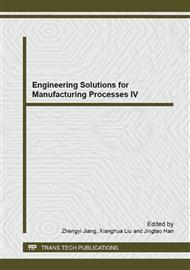p.1111
p.1117
p.1121
p.1126
p.1132
p.1136
p.1144
p.1150
p.1155
Robotic Additive Manufacturing System of GMAW Constrained by Electromagnetism
Abstract:
A robotic additive manufacturing system of GMAW constrained by electromagnetism has been developed recently. In this paper, the work principle, functions and composition of this system are introduced. A metal part to be manufactured should be constructured three-dimension CAD model firstly, then the delamination process of three-dimension model is carried out. Furthermore, the forming path planning of additive manufacturing is performed and finally the part is fabricated layer-by-layer in virtue of GMAW process. The additive manufacturing system consists of the robot system, GMAW power, a device producing magnetic field, a linear laser system monitoring precision of the forming part, a digital measuring device monitoring forming temperature,central control system and software modules that support various functions. The functions of the additive manufacturing system comprise CAD model construction of parts, discretization of three-dimension model, forming path planning and GMAW deposition forming layer-by-layer, and etc. It is indicated that the exploitation of the additive manufacturing system will provide an effective way for the manufacturing of metal parts.
Info:
Periodical:
Pages:
1132-1135
Citation:
Online since:
February 2014
Authors:
Keywords:
Price:
Сopyright:
© 2014 Trans Tech Publications Ltd. All Rights Reserved
Share:
Citation:


